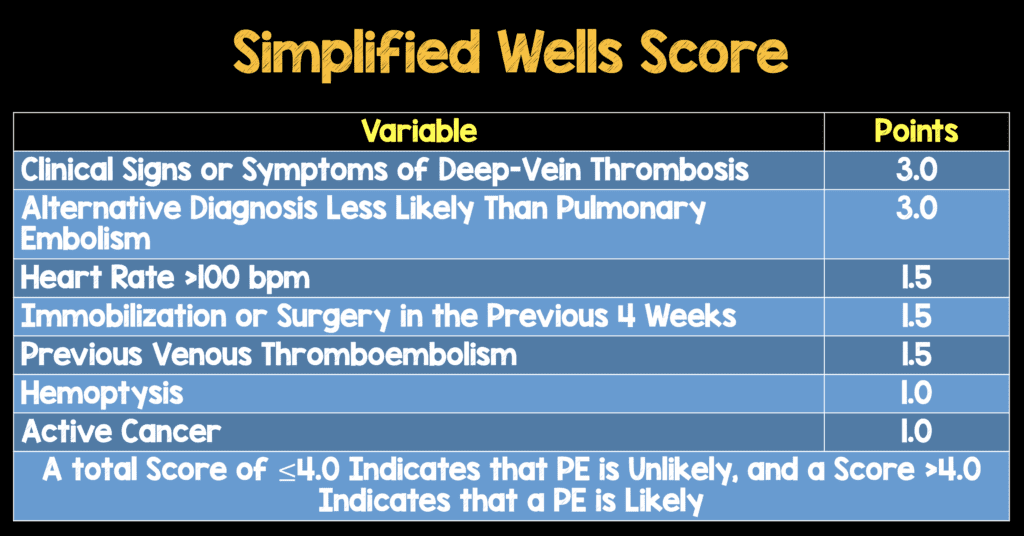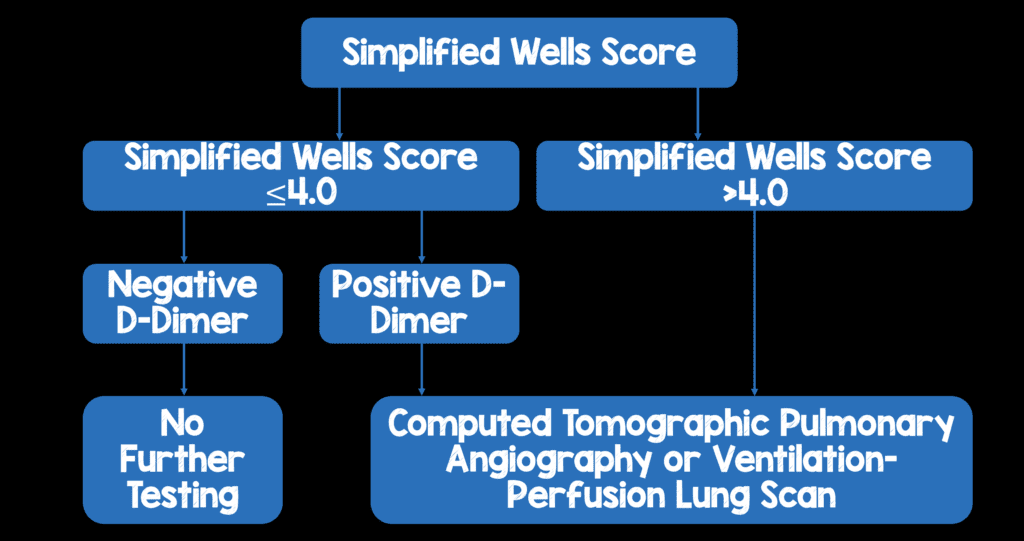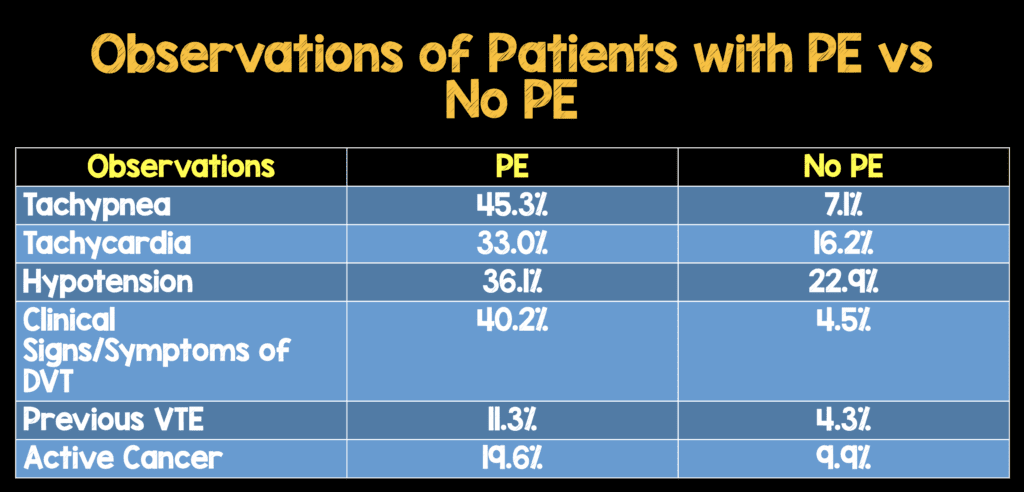
 Background: Syncope is a very frustrating chief complaint for many in the medical field. There is no gold standard test and no validated decision instrument. It represents about 3 – 5% of ED visits, 1 – 6% of hospital admissions, and in patients over the age of 65 years it is the 6th most common cause of hospitalization [2][3]. Additionally, both ED and inpatient work ups are notoriously low yield for finding significant pathology. Pulmonary embolism is one of the myriad of diagnoses included in the differential diagnosis of syncope, but there is little information looking at its prevalence amongst hospitalized patients. Fast forward to Oct. 20th, 2016 and there is now some evidence just published in the NEJM: The PESIT Trial.
Background: Syncope is a very frustrating chief complaint for many in the medical field. There is no gold standard test and no validated decision instrument. It represents about 3 – 5% of ED visits, 1 – 6% of hospital admissions, and in patients over the age of 65 years it is the 6th most common cause of hospitalization [2][3]. Additionally, both ED and inpatient work ups are notoriously low yield for finding significant pathology. Pulmonary embolism is one of the myriad of diagnoses included in the differential diagnosis of syncope, but there is little information looking at its prevalence amongst hospitalized patients. Fast forward to Oct. 20th, 2016 and there is now some evidence just published in the NEJM: The PESIT Trial.
REBEL Cast Episode 30: The PESIT Trial
Click here for Direct Download of Podcast
What Trial are We Reviewing:
Prandoni P et al. Prevalence of Pulmonary Embolism Among Patients Hospitalized for Syncope. NEJM 2016; 375(16): 1524 – 31. [Epub Ahead of Print]

What They Did:
- Multicenter, Cross-Sectional Study from 11 Hospitals in Italy

Outcomes:
- Prevalence of Pulmonary Embolism among Patients with a First Episode of Syncope
Exclusion:
- Previous Episodes of Syncope
- On Anticoagulation Therapy
- Pregnant
- Did Not Provide Informed Consent
Results:
- 2584 Patients Screened Total (157 Excluded)
- 1857 (72%) Patients Either Not Admitted or Declined Hospitalization
- 560 Patients were included in this study
- Pulmonary Embolism ruled out (via Wells’ score + D-dimer): 330/560 patients (58.9%)
- Pulmonary Embolism was ruled in: 97/230 patients (42.2%)
- Prevalence of Pulmonary Embolism: 17.3% (Range: 15 – 20%)
- Evidence of Pulmonary Embolism on CTPA:
- Main Pulmonary Artery: 30/72 patients (41.7%)
- Lobar Pulmonary Artery on CTPA: 18/72 patients (25.0%)
- Segmental Pulmonary Artery on CTPA: 19/72 patients (26.4%)
- Subsegmental Pulmonary Artery on CTPA: 5/72 patients (6.9%)
- Evidence of Pulmonary Embolism on V/Q Scan:
- >50% of the Area of Both Lungs: 4/24 Patients (16.7%)
- 26 – 50% of the Area of Both Lungs: 8/24 Patients (33.3%)
- 1 – 25% of the Area of Both Lungs: 12/24 Patients (50.0%)
- Pulmonary Embolism Identified in Patients with an Alternative Diagnosis: 45/355 patients (12.7%)
- 31/45 Patients (68.9%) had a Lobar or More Proximal Location of the Thrombus on CTPA or Defect >25% on V/Q Scan
- Pulmonary Embolism Identified in Patients without an Alternative Diagnosis: 52/205 patients (25.4%)

Strengths:
- Multicenter study
- Presence or absence of PE assessed with a validated algorithm based on pretest clinical probability
Limitations:
- Hugely biased selection of patients (None of the discharged patients included)
- A specific syncope workup was not mandated by all hospitals involved in the study
- Imaging for PE was only performed in patients with an elevated D-Dimer and/or had a high pretest probability for PE
- Confirmation of DVT in symptomatic patients was also not mandated
- Search for other causes of syncope was left to the discretion of the physician, meaning other causes of syncope may have been under reported
- No information was collected on treatment and follow-up of patients; therefore, we don’t know what the clinical outcomes of these patients was
Discussion:
- Imaging to confirm PE was not done at admission, but up to 48 hours after admission. Immobility during hospitalization is a known to cause VTE
- Authors conclusion of PE confirmation in approximately one in every six patients (17.3%) however these numbers are grossly inflated
- 2427 patients were actually included in this study (157 were excluded). Excluding all patients will overestimate the results, as was done in this study
- 97 patients had PE confirmed so instead of 97/230 (42.2%) the number should be 97/2427 (3.9%)
- To take this one step further…if you exclude subsegmental PEs (i.e. Unclear clinical significance) the number is actually 80/2427 (3.2%)
- Average Age of the patients in this study was 76 years
- 77.7% were ≥ 70 years
- 52.5% were ≥ 80 years
- Although not studied would an age-adjusted D-Dimer [Age (years) x 10 ug/L for patients > 50 years of age] have reduced the number of tests performed
- Many patients with confirmed PE were more likely to have previous VTE, Elevated RR, Tachycardia, Hypotension, clinical signs of DVT, and Active Cancer (i.e. Evidence of PE by History & Physical). In everyday practice any patient with evidence of PE would be worked up prior to admission. This further biases and overestimates the results of this study
- Prevalence of PE in this study was 19% which is much higher than prevalence of PE in the US (i.e. 5 – 10%).
Author Conclusion: “Pulmonary embolism was identified in nearly one of every six patients hospitalized for a first episode of syncope.”
Clinical Take Home Point: Unfortunately, this study is a gross overestimation of PE, which may ultimately lead to over testing, without really knowing the clinical significance of identification as this was not truly studied.
References:
- Prandoni P et al. Prevalence of Pulmonary Embolism Among Patients Hospitalized for Syncope. NEJM 2016; 375(16): 1524 – 31. [Epub Ahead of Print]
- Huff JS et al. Clinical policy: critical issues in the evaluation and management of adult patients presenting to the emergency department with syncope. Ann Emerg Med 2007; 49(4): 431 – 44. PMID: 17370717
- Sun BC et al. Direct Medical Costs of Syncope-Related Hospitalizations in the United States. Am J Cardiol 2005; 95(5): 668 – 71. PMID: 15721118
For More Thoughts on This Topic Checkout:
- Ryan Radecki at EMLit of Note: The Impending Pulmonary Embolism Apocolypse
- Simon Carley at St. Emlyn’s: JC – Prevelance of PE in Patients with Syncope
- Rory Spiegel at EM Nerd (EMCrit): The Case of the Incidental Bystander
- PulmCCM: PESIT Investigators – The Incidence of PE in Those Hospitalized Following First Syncope
- Sindhya Rajeev at CORE EM: Prevalence of PE in First Time Syncope Admitted to the Hospital (PESIT Study)
- Justin Morgenstern at First 10 in EM: Quick PESIT Update – PE in Syncope?
Post Peer Reviewed By: Anand Swaminathan (Twitter: @EMSwami)
The post REBEL Cast Episode 30: The PESIT Trial – Do All Patients with 1st Time Syncope Need a Pulmonary Embolism Workup? appeared first on REBEL EM - Emergency Medicine Blog.
